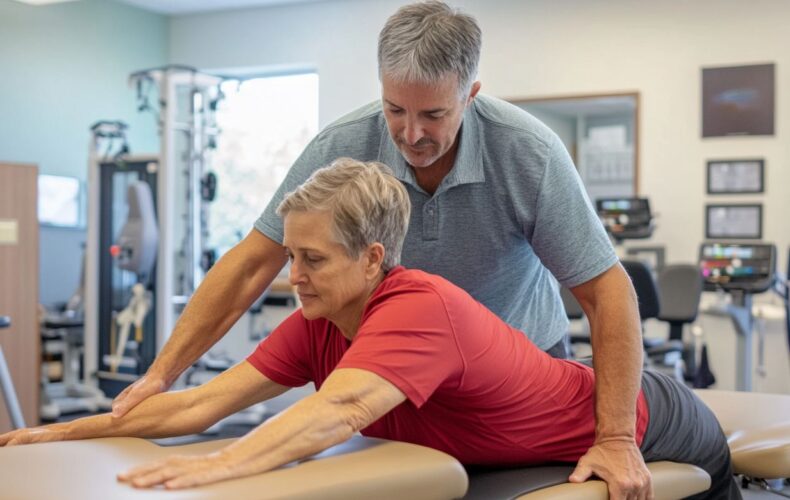The Role of Physical Therapy in Spine Rehabilitation
Spine rehabilitation is a crucial aspect of recovery for individuals facing various spinal conditions.
With the right approach, physical therapy can significantly alleviate pain, enhance mobility, and improve overall function.
This article explores the integral role of physical therapy in spine rehabilitation, outlining key techniques and personalized treatment plans that cater to individual needs.
It also discusses innovative methods like weight-supported locomotor training and addresses the psychological factors involved in recovery.
Learn how effective physical therapy can transform your journey to better spinal health.
Understanding Spinal Conditions
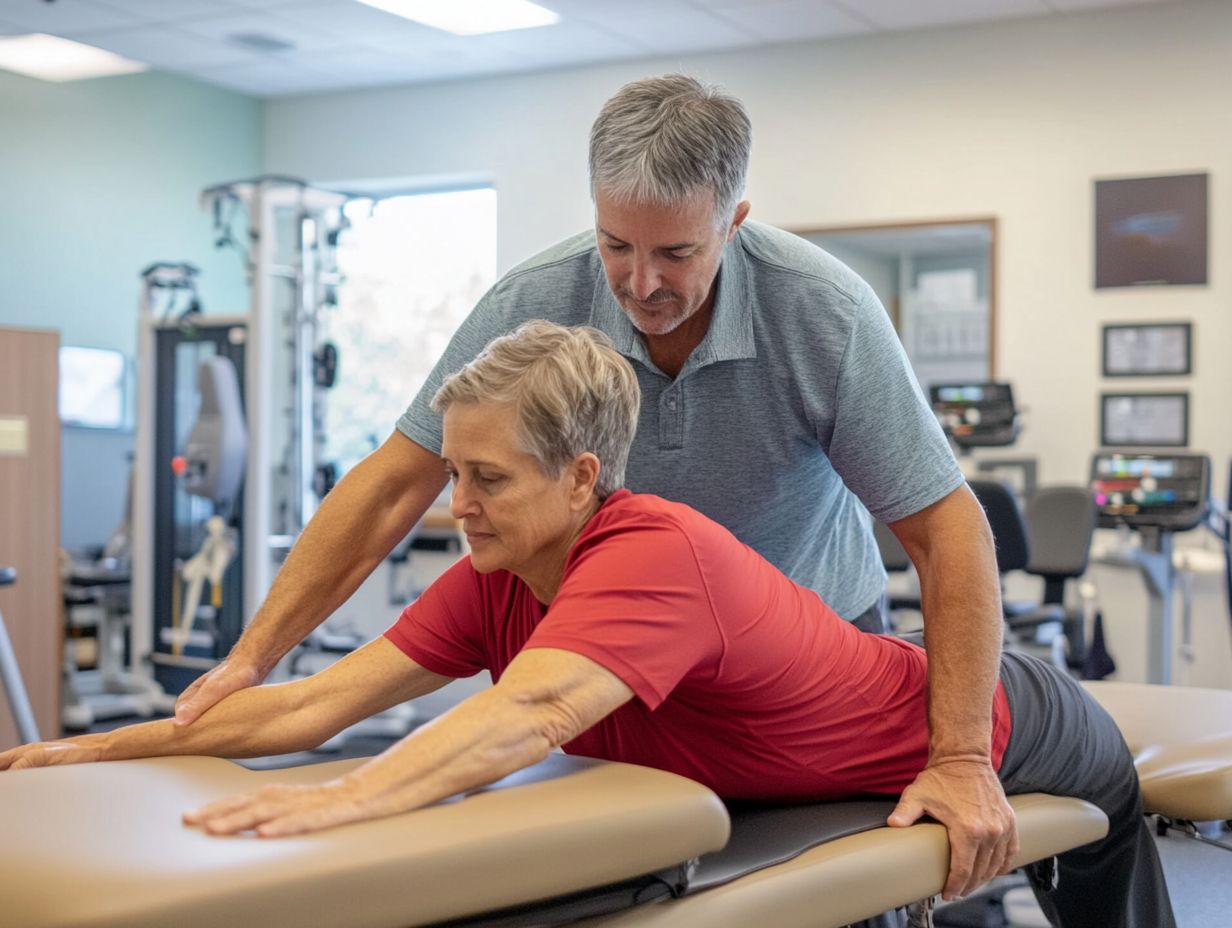
Understanding spinal conditions is essential for effective rehabilitation, as spinal cord injuries can vary significantly in severity and associated complications, including autonomic dysreflexia, deep venous thrombosis, and pressure ulcers, which may arise during the recovery process.
These conditions can range from mild strains and sprains to severe traumas that result in partial or complete paralysis. For example, a herniated disc, often classified as a less severe condition, may lead to localized pain and discomfort, impacting mobility but allowing for a more straightforward rehabilitation approach.
In contrast, a complete spinal cord injury presents a greater challenge, requiring comprehensive therapy programs tailored to the individual’s functional limitations and rehabilitation goals. Each type of spinal condition also brings its own set of complications that can hinder recovery; therefore, understanding these intricacies is crucial.
Physical therapists play a pivotal role in identifying potential risks during treatment and implementing strategies that prioritize the patient’s overall well-being and functional independence.
Physical Therapy’s Role in Spine Rehabilitation
Physical therapy serves a critical function in spine rehabilitation by delivering specialized rehabilitation services that are customized to meet the unique needs of each patient.
This approach assists individuals in navigating the complexities of the recovery process while optimizing improvements in physical function and enhancing overall well-being.
Pain Relief
Pain relief is a pivotal component of rehabilitation therapy for spinal injuries, as effective management of discomfort significantly enhances patient engagement in mobility training and other therapeutic interventions.
A comprehensive approach to pain relief in physical therapy incorporates various strategies designed to address both acute and chronic discomfort. These strategies include the utilization of modalities such as heat and cold therapy, which aim to reduce inflammation and improve blood circulation. Additionally, manual therapy techniques can be employed to manipulate soft tissues and joints, promoting relaxation and alleviating pain.
Tailored exercise programs are essential for fostering strength and flexibility, thereby enabling patients to regain function and independence. By integrating these diverse approaches, healthcare professionals not only improve patient comfort but also enable individuals to actively participate in their recovery journey. This holistic method promotes better overall outcomes and facilitates progress throughout the rehabilitation process.
Improved Function
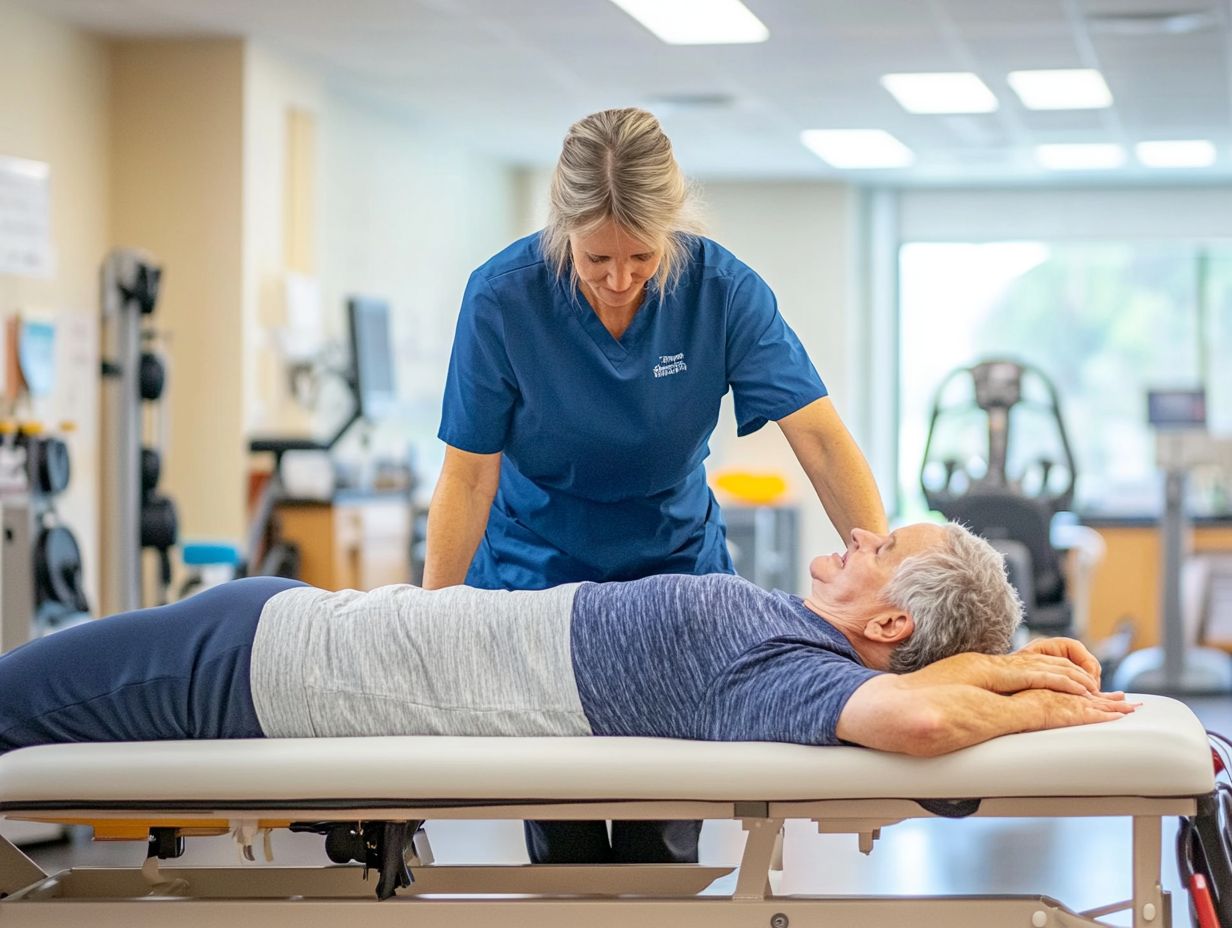
Improving function constitutes a primary objective of physical therapy in spine rehabilitation, emphasizing the enhancement of upper extremity function and overall mobility to promote functional independence in patients.
To achieve this goal, therapists implement a range of techniques that are tailored to meet the individual needs of each patient. For example, strength training exercises such as seated rows and shoulder presses can significantly enhance upper body strength, thereby facilitating the performance of daily tasks, including reaching for objects or lifting lightweight items.
Flexibility exercises, which include various stretching routines, play a crucial role in improving the range of motion in both the spine and limbs, essential for movements such as bending and turning. Additionally, balance training, through activities like standing on one leg or utilizing a balance board, may be incorporated to promote safer mobility and reduce the risk of falls.
By consistently focusing on these strategies, therapy sessions aim not only to alleviate discomfort but also to enable individuals to regain their independence in multiple facets of life.
Enhanced Mobility
Enhanced mobility is essential for patients recovering from spinal cord injuries, with rehabilitation therapy frequently incorporating gait training and physical activity to promote independence and community participation.
The importance of mobility extends beyond mere physical movement; it plays a critical role in rebuilding confidence and improving overall quality of life. Gait training techniques, such as over-ground walking and harness-based systems, enable individuals to regain fundamental skills progressively. These methods not only enhance strength and coordination but also enable patients to navigate their environments with efficacy.
Physical therapists play a vital role as facilitators in this recovery process, actively encouraging participation in therapeutic activities. By creating a supportive environment that fosters self-efficacy, they assist individuals in taking ownership of their recovery, ultimately promoting successful reintegration into society and daily life.
Personalized Treatment Planning
Personalized treatment planning is essential in spine rehabilitation, as it enables healthcare professionals to customize rehabilitation strategies to address each patient’s specific needs throughout the recovery process.
This approach considers various factors, including the severity of the injury, which influences the intensity and nature of the prescribed treatments. Additionally, patient goals are critically important, as individuals may have different aspirations for their recovery, whether that involves returning to a particular sport, performing daily activities without pain, or achieving overall wellness.
Furthermore, ongoing assessment of the patient’s progress allows for adjustments to the treatment plan as necessary, ensuring that the therapies remain effective. Through the collaborative efforts of a multidisciplinary team of physicians, therapists, and specialists, a comprehensive and adaptable treatment plan can be developed, ultimately leading to improved outcomes for patients.
Physical Therapy Techniques in Spine Rehabilitation
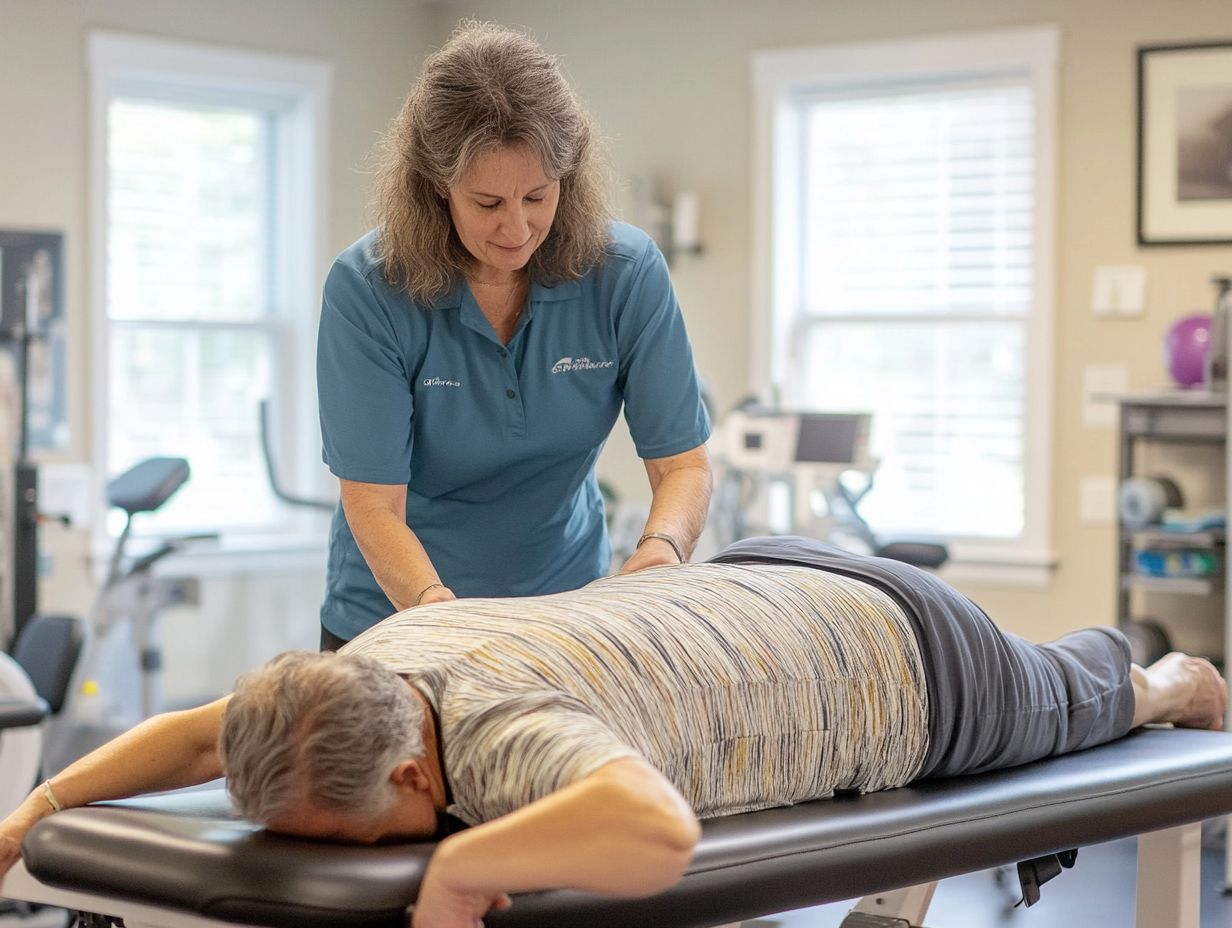
Physical therapy techniques are varied and essential for effective spine rehabilitation. These techniques include manual therapy, exercise therapy, and patient education, all of which play a vital role in facilitating recovery and enableing patients.
Manual Therapy
Manual therapy is a hands-on physical therapy technique designed to alleviate pain and enhance mobility through the targeted manipulation and mobilization of soft tissues and joints.
This therapeutic approach includes a range of techniques, such as joint mobilization, soft tissue manipulation, and myofascial release, each specifically tailored to address particular symptoms and conditions. Practitioners employ these methods to relieve tension, improve circulation, and restore functional movement, particularly in the spinal region. For individuals experiencing discomfort or limitations in their daily activities, these interventions can offer substantial relief.
It is essential for patients to consult with their healthcare providers prior to initiating a manual therapy regimen, as certain conditions may necessitate careful consideration or alternative treatments to achieve optimal outcomes.
Exercise Therapy
Exercise therapy serves as a fundamental component of rehabilitation, concentrating on the enhancement of physical activity to improve mobility and overall functionality in individuals recovering from spinal cord injuries.
Through a variety of tailored exercise therapy programs, practitioners aim to facilitate not only the restoration of movement but also to promote independence in daily activities. By incorporating structured physical activities, these programs are designed to address specific objectives, including strength building, balance improvement, and endurance enhancement.
Participants often discover that consistent engagement in exercise not only leads to physical improvements but also enhances emotional well-being, thereby significantly elevating their quality of life. This holistic approach to rehabilitation underscores the importance of maintaining an active lifestyle, ultimately enableing individuals to reclaim their lives following an injury.
Modalities
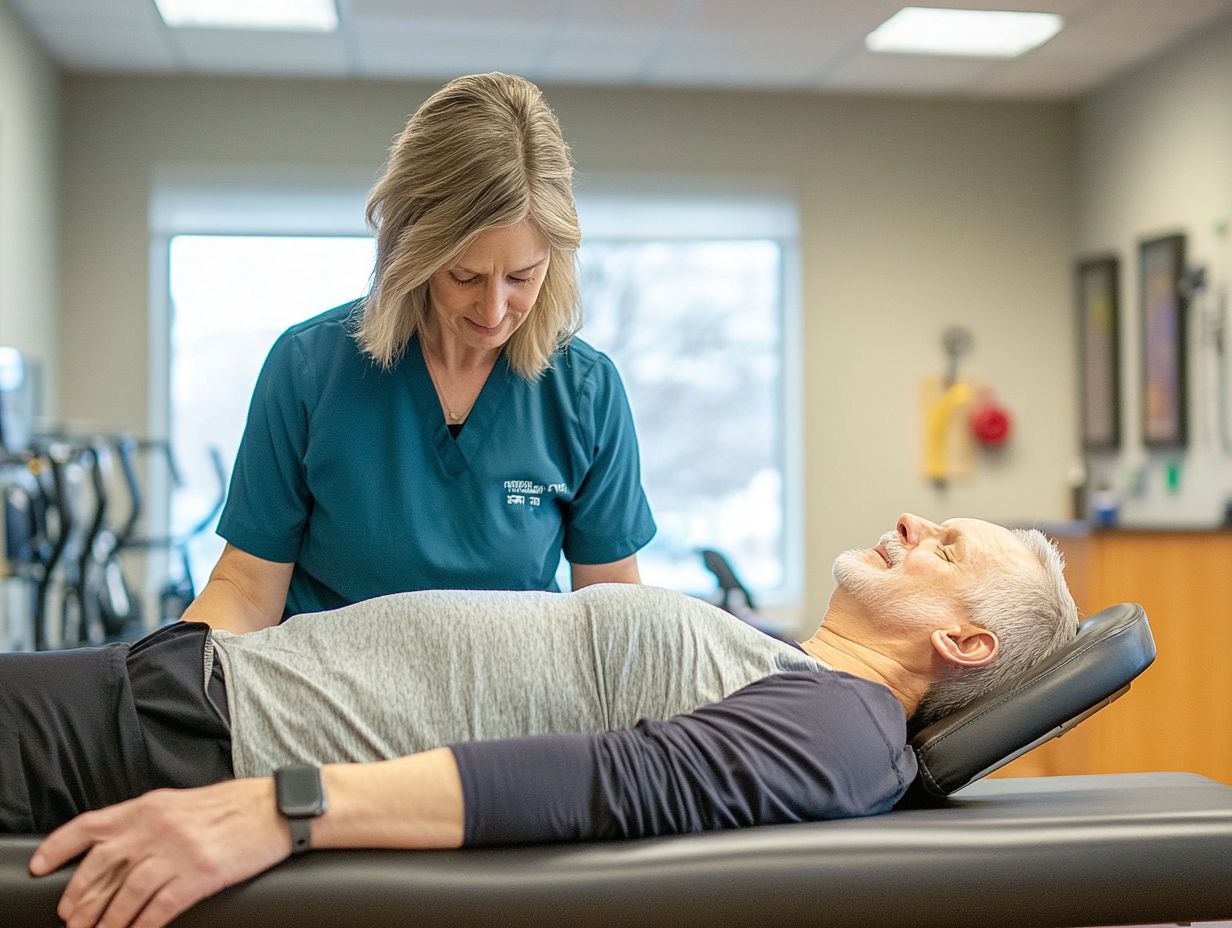
Modalities in rehabilitation therapy encompass the application of therapeutic agents, including heat, cold, and electrical stimulation, to facilitate recovery and manage pain in patients with spinal injuries.
These modalities are customized to meet the specific needs of individuals, addressing a variety of symptoms and enhancing the overall healing process. For example, thermal therapies, such as hot packs or paraffin baths, promote increased blood flow and reduce stiffness in affected areas, while cryotherapy employs cold applications to alleviate swelling and numb discomfort.
Electrical stimulation techniques, including Transcutaneous Electrical Nerve Stimulation (TENS), can disrupt pain signals and stimulate muscle contraction. By integrating these modalities into a comprehensive treatment plan, healthcare professionals can effectively target both the underlying issues and the associated symptoms, thereby supporting patients in their recovery journey and enhancing their mobility.
Education and Lifestyle Modifications
Education and lifestyle modifications are fundamental components of rehabilitation therapy, enabling patients to actively engage in their recovery journey and adjust to new physical limitations.
By gaining a comprehensive understanding of their conditions, patients are better positioned to make informed decisions regarding their health and well-being. This process typically involves collaboration between physical therapists and patients, wherein therapists impart essential insights and tools that enhance understanding.
As therapists elucidate the complexities of various conditions and the associated lifestyle changes required, patients develop confidence and a heightened sense of control over their circumstances. This dynamic not only encourages adherence to treatment plans but also cultivates an environment conducive to open communication.
Ultimately, the knowledge acquired through education lays the groundwork for improved outcomes and an enhanced quality of life.
Weight-Supported Locomotor Training: A Tool for Recovery
Weight-supported locomotor training is an innovative rehabilitation therapy technique designed to assist individuals with spinal cord injuries in regaining mobility by providing support during walking and other locomotor activities.
This method employs specialized equipment that offers controlled support for patients’ weight, facilitating movement patterns that closely resemble natural walking. By adjusting the level of weight support, this therapy can be customized to meet the specific needs of each patient, thereby promoting muscle activation and enhancing coordination.
Research has demonstrated that weight-supported locomotor training enhances neuroplasticity, a critical factor in rehabilitation, as it encourages the nervous system to adapt and form new neural connections. Consequently, patients often experience improved recovery outcomes, increased independence in their daily activities, and a heightened sense of confidence in their mobility training efforts.
Psychological Aspects of Spine Rehabilitation
The psychological aspects of spine rehabilitation are crucial, as emotional and psychological distress can significantly influence recovery outcomes and the overall rehabilitation process.
Recognizing this importance, it is essential to develop comprehensive strategies that address these psychological needs. Effective coping mechanisms, such as mindfulness, cognitive-behavioral techniques, and relaxation exercises, can be invaluable in managing the stress and anxiety that frequently accompany physical rehabilitation.
The role of therapists transcends the realm of physical recovery; they also provide critical emotional support and positive reinforcement, helping withdividuals in navigating their fears and uncertainties. By fostering a safe environment for expression and encouraging open dialogue, therapists enable their clients to confront emotional challenges directly, ultimately contributing to a more holistic recovery experience.
Benefits of Physical Therapy for Spinal Health
The advantages of physical therapy for spinal health are substantial, encompassing improved mobility and function, as well as increased community participation and overall quality of life for individuals with spinal cord injuries.
Contact Information for Further Inquiries
For further inquiries regarding spinal rehabilitation and the role of physical therapy, please utilize the contact information provided below.
Understanding spinal rehabilitation is a crucial step towards recovery for individuals experiencing back injuries or chronic pain. This specialized field focuses on enhancing mobility, alleviating discomfort, and promoting overall well-being.
Should you have specific questions regarding treatment options, success stories, or what to expect during your therapy sessions, please do not hesitate to reach out. Our team is committed to providing insights and guidance tailored to your individual circumstances.
You may contact us via email at info@rehabcenter.com or by phone at (555) 123-4567 for personalized assistance. We also encourage you to visit our website for valuable resources and frequently asked questions that further enhance your understanding of the rehabilitation process.
